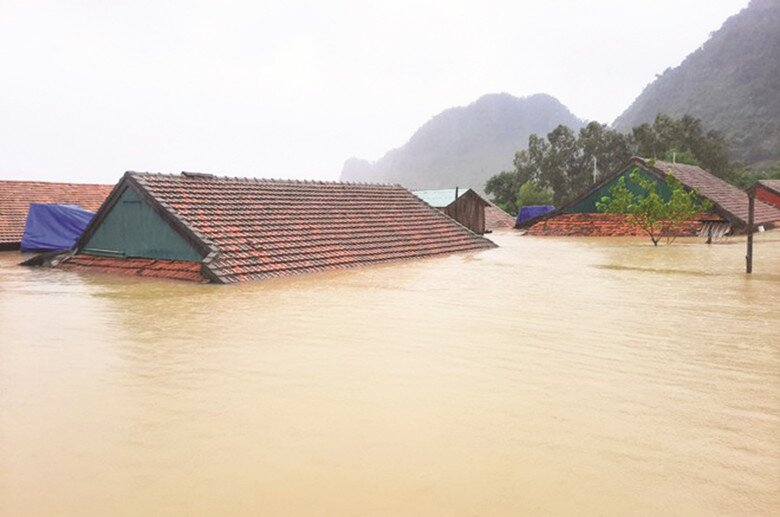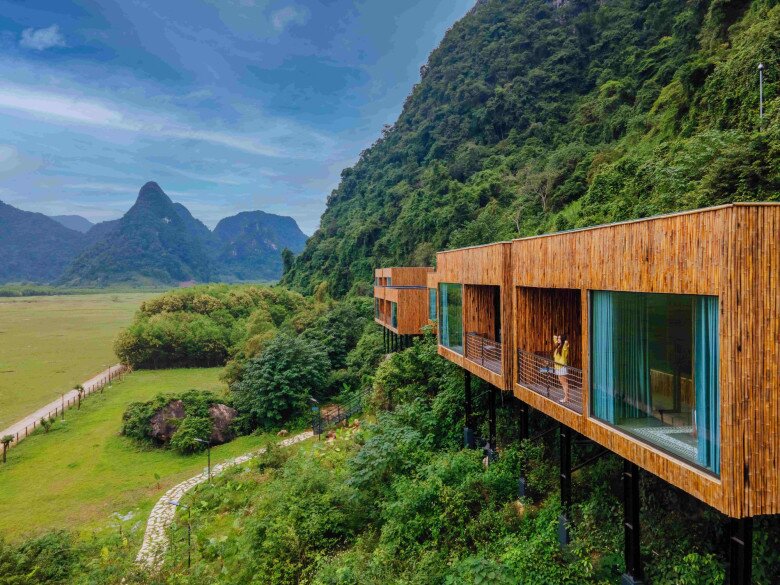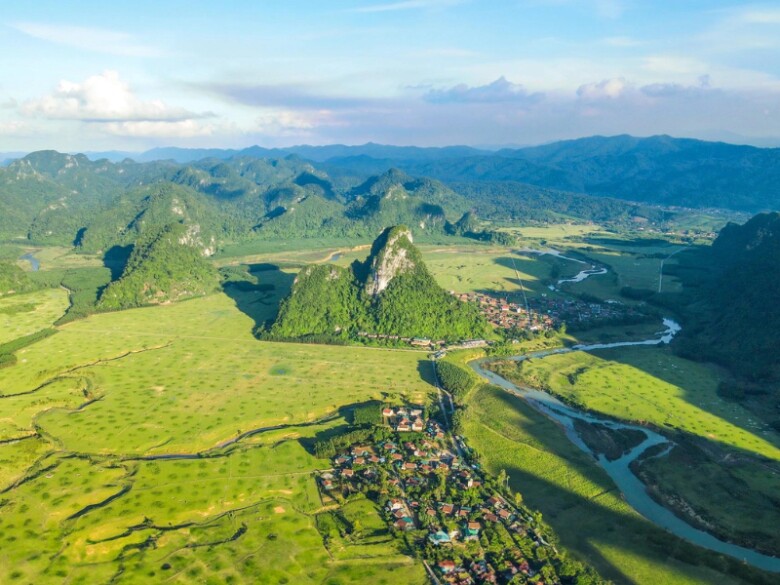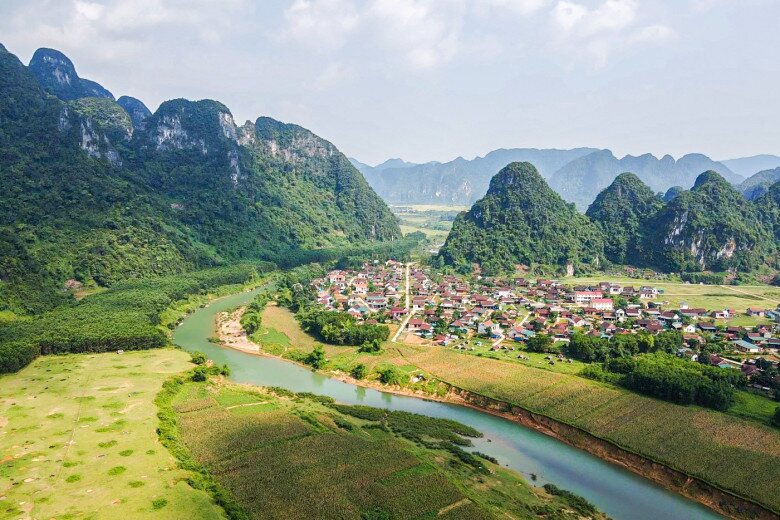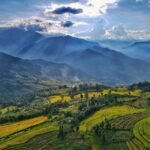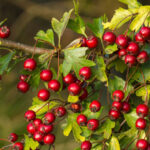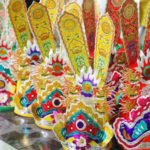Tan Hoa village, located in the heart of Quang Binh province, Vietnam, has recently gained international recognition for its breathtaking beauty and resilience in the face of natural disasters. Nestled amidst majestic limestone mountains, Tan Hoa presents a picturesque landscape of lush valleys, meandering rivers, and serene countryside charm.

However, due to its geographical location in a “basin” surrounded by mountains, the village is prone to flooding during heavy rains. The recent Typhoon No. 4 that hit central Vietnam brought intense rainfall, causing rivers and streams to overflow and resulting in the inundation of hundreds of houses in Tan Hoa. The floodwaters rose to a depth of 0.5–2 meters, submerging more than 400 homes and isolating the village with water levels reaching nearly 2 meters.
Fortunately, thanks to advance warnings and preparedness, the locals had safely secured their belongings and taken refuge, ensuring their safety during this challenging time.
A Village of Cinematic Beauty
Tan Hoa, a mountainous commune in Minh Hoa district, covers an area of 7,427.20 hectares and is nestled amidst breathtaking limestone mountains. It boasts a plethora of caves formed over millions of years, including Hang con Chuot (Mouse Cave), Hang Doi (Bat Cave), Hang Tung (Chant Cave), and the renowned Hang Tu Lan.
The village’s unique geographical location and climate give it a distinct advantage in eco-tourism and cave exploration. The area experiences a subtropical climate with distinct spring, summer, autumn, and winter seasons. The weather is typically hot, humid, and rainy, with occasional cold spells.
Tan Hoa captivates visitors with its stunning scenery, featuring limestone mountains, verdant valleys, and endless grass fields. The Rao Nan River gently flows through the valley, its emerald waters enriching the fertile lands on its banks.
The village has also gained fame as the filming location for several notable Vietnamese and international films, including “The Immortal” directed by Victor Vu, “The Legend of Quan Tien” by Dinh Tuan Vu, and “Kong: Skull Island” by Jordan Vogt-Roberts.
From Flood-Prone to World’s Best Tourism Village
While Tan Hoa is renowned for its natural beauty and peaceful atmosphere, it has also earned the nickname of a “flood pocket” due to its frequent flooding during the rainy season. The Rao Nan River, originating from the Vietnam-Laos border, flows underground through Hang Ruc in Trung Hoa commune before reaching Tan Hoa.
During the rainy season, the river swells with water from the upstream areas, and the only outlet for this water is through the caves at the end of the valley. However, these outlets are not large enough to handle the rapid influx of floodwaters, resulting in annual floods with water levels reaching up to 12 meters during peak periods in October and November.
Following the devastating flood of 2010, the Tan Hoa commune officials embarked on a journey to find a solution. They invented floating houses, measuring about 20 square meters and constructed with wood and a system of tightly secured barrels underneath. Additionally, each house is anchored with sturdy columns to prevent them from being swept away by the strong currents.
Through concerted efforts, Tan Hoa has transformed from a flood-prone area into a thriving tourism hub. Since 2014, Quang Binh province has collaborated with tourism companies to develop a robust strategy for Tan Hoa’s growth: engaging locals in tourism activities, empowering them to become service providers, and creating diverse tourism products such as cave exploration tours of Hang Tu Lan, ATV rides through the pristine Lim Forest, and more.
In October 2023, the World Tourism Organization (UNWTO) bestowed upon Tan Hoa village the prestigious title of “World’s Best Tourism Village.” The village is now a model for climate-resilient tourism, offering diverse experiences such as homestays, agricultural activities, local dining, souvenir shopping, and a range of other services for visitors.
Exploring Tan Hoa: A Journey of Adventure and Culture
1. Discover the Majestic Tu Lan Cave System:
Tan Hoa is renowned for its spectacular Tu Lan cave system, a major tourist attraction. Visitors can embark on cave exploration tours, swim through underground rivers, and marvel at the stunning stalactites and stalagmites. Some tours even offer overnight camping inside the caves, providing a tranquil escape and a chance to witness the caves’ nocturnal beauty.
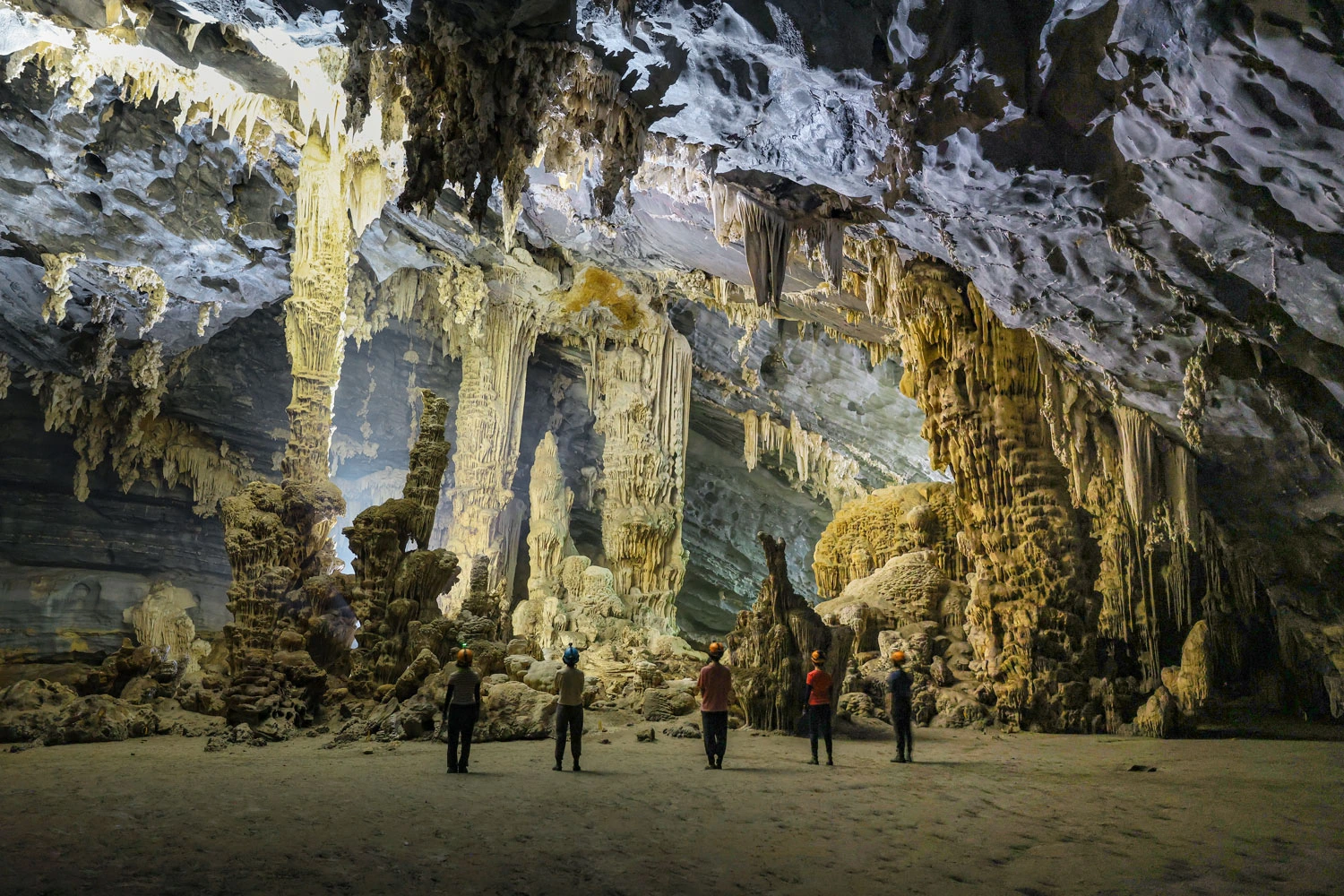
Trekking through the Tu Lan caves is a favorite activity among adventurous souls.
2. Embark on a Thrilling ATV Ride through the Lim Forest:
For those seeking an adrenaline-pumping experience, booking an ATV tour or renting an ATV to navigate through the Lim Forest is a must. This exhilarating journey takes you through rivers, across challenging terrain, and into the heart of the pristine forest. The highlight of the trip is a passage that evokes memories of the “Kong: Skull Island” film, shot on location in this very forest. In just 2 hours, you’ll be immersed in the beauty and adventure of the vast Lim Forest.
3. Explore the Enchanting Hang Chuot (Mouse Cave):
If you’re short on time but eager for exploration, Hang Chuot is the perfect destination. This dry cave, over 400 meters long, connects Tan Hoa village to the Laken Valley on the other side of the mountain range. Equipped with helmets, headlamps, and safety gear, visitors can embark on a thrilling 3-hour expedition through the cave, marveling at its grand arches, high ceilings, heart-shaped entrance, and magnificent stalactites.
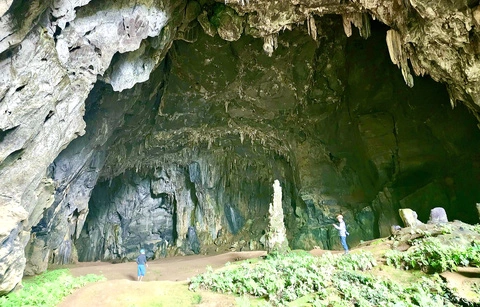
Tan Hoa also delights visitors with its unique culinary offerings, among which “Com Poi” stands out as a symbol of community and unity. This dish, made with corn or rice, cassava, and beans, is more than just a meal—it represents the essence of village camaraderie. The intricate process of making “Com Poi” involves soaking and grinding the corn, kneading the dough, and steaming it in bamboo tubes. Each step is meticulously executed, reflecting the skill and patience of the local chefs.

The aroma and flavor of “Com Poi” are unforgettable, leaving visitors with a lasting impression of Tan Hoa’s cultural richness and culinary delights.
“The Diverse Celebrations of the ‘Kitchen God’ Festival in Vietnam’s Three Regions”
“The tradition of worshipping the Kitchen Gods varies across the three regions of Vietnam, each with its own unique timing, offerings, and rituals. Let’s delve into the fascinating details of this ceremony as practiced in the North, Central, and Southern regions, and explore the rich cultural diversity of Vietnam during this auspicious occasion.”

























